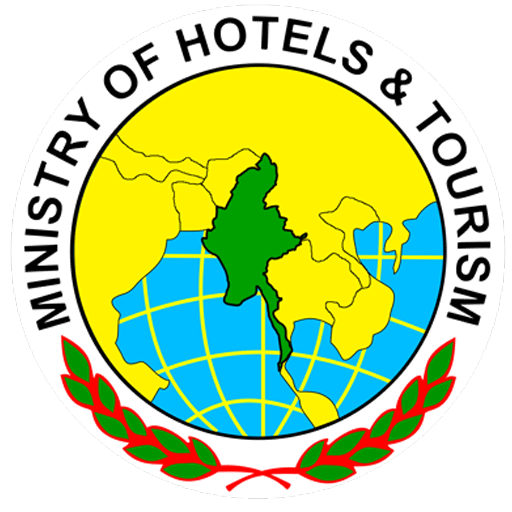Buddhism in Myanmar
Buddhism in Myanmar
 Buddhism in Myanmar is predominantly of the Theravada tradition, practised by 89% of the country’s population. It is the most religious Buddhist country in terms of the proportion of monks in the population and proportion of income spent on religion. Adherents are most likely found among the dominant Bamar people, Shan, Rakhine, Mon, Karen, Zo, and Chinese who are well integrated into Burmese society. Monks, collectively known as the sangha, are venerated members of Burmese society. Among many ethnic groups in Myanmar, including the Bamar and Shan, Theravada Buddhism is practised in conjunction with nat worship, which involves the placation of spirits who can intercede in worldly affairs.
Buddhism in Myanmar is predominantly of the Theravada tradition, practised by 89% of the country’s population. It is the most religious Buddhist country in terms of the proportion of monks in the population and proportion of income spent on religion. Adherents are most likely found among the dominant Bamar people, Shan, Rakhine, Mon, Karen, Zo, and Chinese who are well integrated into Burmese society. Monks, collectively known as the sangha, are venerated members of Burmese society. Among many ethnic groups in Myanmar, including the Bamar and Shan, Theravada Buddhism is practised in conjunction with nat worship, which involves the placation of spirits who can intercede in worldly affairs.
 With regard to the daily routines of Buddhists in Myanmar, there are two most popular practices: merit-making and vipassanā. The weizza path is the least popular; it is an esoteric form somewhat linked to Buddhist aspiration that involves the occult. Merit-making is the most common path undertaken by Burmese Buddhists. This path involves the observance of the Five Precepts and accumulation of good merit through charity and good deeds (dana) to obtain a favourable rebirth. The vipassana path, which has gained ground since the early 1900s, is a form of insight meditation believed to lead to enlightenment. The weizza path is an esoteric system of occult practices (such as recitation of spells, samatha and alchemy) believed to lead to life as a weizza (also spelt weikza), a semi-immortal and supernatural being who awaits the appearance of the future Buddha, Maitreya (Arimeitaya).
With regard to the daily routines of Buddhists in Myanmar, there are two most popular practices: merit-making and vipassanā. The weizza path is the least popular; it is an esoteric form somewhat linked to Buddhist aspiration that involves the occult. Merit-making is the most common path undertaken by Burmese Buddhists. This path involves the observance of the Five Precepts and accumulation of good merit through charity and good deeds (dana) to obtain a favourable rebirth. The vipassana path, which has gained ground since the early 1900s, is a form of insight meditation believed to lead to enlightenment. The weizza path is an esoteric system of occult practices (such as recitation of spells, samatha and alchemy) believed to lead to life as a weizza (also spelt weikza), a semi-immortal and supernatural being who awaits the appearance of the future Buddha, Maitreya (Arimeitaya).
History
 The history of Buddhism in Myanmar probably extends more than two thousand years.The Sāsana Vaṃsa (Burmese Thathana Win), written by Pinyasami in 1834, summarises much of the history of Buddhism in Myanmar. According to the Mahavamsa, a Pali chronicle of fifth century Sri Lanka, Ashoka sent two bhikkhus, Sona and Uttara, to Suvarnabhumi around 228 BC with other monks and sacred texts, including books.
The history of Buddhism in Myanmar probably extends more than two thousand years.The Sāsana Vaṃsa (Burmese Thathana Win), written by Pinyasami in 1834, summarises much of the history of Buddhism in Myanmar. According to the Mahavamsa, a Pali chronicle of fifth century Sri Lanka, Ashoka sent two bhikkhus, Sona and Uttara, to Suvarnabhumi around 228 BC with other monks and sacred texts, including books.
An Andhra Ikshvaku inscription from about the 3rd century refers to the conversion of the Kiratas to Buddhism, who are thought to have been Tibeto-Burman-speaking peoples of Myanmar. Early Chinese texts of about the same date speak of a “Kingdom of Liu-Yang,” where all people worshiped the Buddha and there were several thousand samaṇas. This kingdom has been identified with a region somewhere in central Burma. A series of epigraphic records in Pali, Sanskrit, Pyu and Mon datable to the 6th and 7th centuries, has been recovered from Central and Lower Burma (Pyay and Yangon). From the 11th to 13th centuries, the Bamar kings and queens of the Pagan Kingdom built countless stupas and temples.
The Ari Buddhism era included the worship of bodhisattvas and nāgas.
 Theravada Buddhism was implanted at Bagan for the first time as early as the 11th century by the Bamar king Anawrahta (1044-1077). In year 1057, Anawratha sent an army to conquer the Mon city of Thaton to obtain theTipiṭāka of the Pāli Canon. He was converted by a Mon bhikkhu, Shin Arahan, to Theravada Buddhism. Shin Arahan’s advice led to acquiring thirty sets of Pali scriptures from the Mon king Manuhal by force. Mon culture, from that point, came to be largely assimilated into the Bamar culture based in Bagan.
Theravada Buddhism was implanted at Bagan for the first time as early as the 11th century by the Bamar king Anawrahta (1044-1077). In year 1057, Anawratha sent an army to conquer the Mon city of Thaton to obtain theTipiṭāka of the Pāli Canon. He was converted by a Mon bhikkhu, Shin Arahan, to Theravada Buddhism. Shin Arahan’s advice led to acquiring thirty sets of Pali scriptures from the Mon king Manuhal by force. Mon culture, from that point, came to be largely assimilated into the Bamar culture based in Bagan.
Despite attempts at reform, certain features of Ari Buddhism and traditional nat worship continued, such as reverence for the bodhisattva Avalokiteśvara (Lawka nat).
Successive kings of Bagan continued to build large numbers of monuments, temples, and pagodas in honour of Buddhism, and there is inscriptional evidence of a Theravadin vihara for bhikkhunis from 1279.
Burmese rule at Bagan continued until the first Mongol invasion of Burma in 1287. Towards the end of the 13th century, Buddhism declined due to the invading Tatars. In the 14th century, another lineage was imported from Sri Lanka to Ayutthaya, the capital of the Thai Ayutthaya Kingdom. A new ordination line, that of the Thai Forest Tradition, thus entered Myanmar.
The Shan, meanwhile, established themselves as rulers throughout the region now known as Myanmar. Thihathu, a Shan king, established rule in Bagan by patronising and building many monasteries and pagodas.
The Mon kingdoms, often ruled by Shan chieftains, fostered Theravada Buddhism in the 14th century. Wareru, who became king of Mottama, patronised Buddhism, and established a code of law, the Dhammasattha, compiled by Buddhist monastics. King Dhammazedi, formerly a Mon bhikkhu, established rule in the late 15th century at Inwa and unified the sangha in Mon territories. He also standardised ordination of monks set out in the Kalyani Inscriptions. Dhammazedi moved the capital back to Hanthawaddy (Bago). His mother-in-law, Queen Shin Sawbu, was also a great patron of Buddhism. She is credited for expanding and gilding the Shwedagon Pagoda, giving her own weight in gold.
The Bamars, who had fled to Taungoo before the invading Shan, established a kingdom there under the reigns of Tabinshwehti and Bayinnaung, who conquered and unified most of modern Myanmar. These monarchs also embraced Mon culture and patronised Theravada Buddhism.
In the reigns of succeeding kings, the Taungoo Dynasty became increasingly volatile and was overthrown by the Mon. In the mid-18th century, King Alaungpaya defeated the Mon, expanded the Bamar kingdoms, and established the Konbaung Dynasty. Under the rule of Bodawpaya, a son of Alaungpaya, a unified sect of monks (“Thudhamma”) was created within the kingdom. Bodawpaya restored ties with Sri Lanka, allowing for mutual influence in religious affairs. During the reigns of the Konbaung kings that followed, both secular and religious literary works were created. King Mindon Min moved his capital to Mandalay.
After Lower Burma had been conquered by the British, Christianity began to gain acceptance. Many monks from Lower Burma had resettled in Mandalay, but by decree of Mindon Min, they returned to serve the Buddhist laypeople. Schisms arose in the sangha; they were resolved during the Fifth Buddhist Synod, held in Mandalay in 1871.
The Fifth Council was convened at Mandalay in Myanmar on the first waning day of Tazaungmone, 1232 Myanmar Era, 2415 B.E (November 1871). The scriptures inscribed on palm-leaves could not last for a long time. Besides there might be many variations in rewriting the scriptures from copy to copy. Therefore, the scriptures were inscribed on marble slabs to dispel these disadvantages.
Two thousand and four hundred bhikkhus led by Venerable Jagarabhivamsa Thera (Tipitakadhara Mahadhammarajadhirajaguru) of Dakkhinarama Monastery, Mandalay, convened, to recite and approve the scriptures. King Mindon initiated and supported the Fifth Great Council to the end. The scriptures were first inscribed on seven hundred and twenty-nine marble slabs ) in the precinct of Lokamarajina Pagoda at the foot of Mandalay Hill. From 1860 to 1868, the Tipitaka was engraved on 729 marble slabs and assembled in the Kuthodaw Pagoda. It took seven years, six months and fourteen days to finish this work. Then the bhikkhus recited to approve the inscriptions for five months and three days. In 1871, a new hti (the gold umbrella that crowns a stupa) encrusted with jewels from the crown was also donated by Mindon Min for the Shwedagon now in British Burma. After the Fifth Great Council. the Pali Texts were translated into Myanmar language, and the Doctrinal Order was promulgated to the whole country for purpose of purification and propagation of the Buddha’s Teachings.
During the British administration of Lower and Upper Burma, also known as Burma Proper, government policies were secular which meant monks were not protected by law. Nor was Buddhism patronised by the colonial government. This resulted in tensions between the colonised Buddhists and their European rulers. There was much opposition (including by the Irish monk U Dhammaloka) to the efforts by Christian missionaries to convert the Burmese people, Bamar, Shan, Mon, Rakhine and plains Karen, with one exception – the hill tribes. Today, Christianity is most commonly practised by the Kuki, Kachin, and the Kayin. Notwithstanding traditional avoidance of political activity, monks often participated in politics and in the struggle for independence.
Since 1948 when the country gained its independence from Great Britain, both civil and military governments have supported Theravada Buddhism. The 1947 Constitution states, “The State recognizes the special position of Buddhism as the faith professed by the great majority of the citizens of the Union.” The Ministry of Religious Affairs, created in 1948, was responsible for administering Buddhist affairs in Myanmar. In 1954, the prime minister, U Nu, convened the Sixth Buddhist Synod at Kaba Aye Pagoda in Rangoon (Yangon), which was attended by 2,500 monks, and established the World Buddhist University.
During the military rule of Ne Win (1962–1988), he attempted to reform Myanmar under the Burmese Way to Socialism which contained elements of Buddhism. In the 8888 Uprising, many monks participated and were killed by Tatmadaw soldiers. The succeeding military regime, the State Peace and Development Council (SPDC) patronised Buddhism, although persecution of Buddhists contrary to the regime, as well as persons of other religions, namely Islam and Christianity, continues.






Like!! Really appreciate you sharing this blog post.Really thank you! Keep writing.